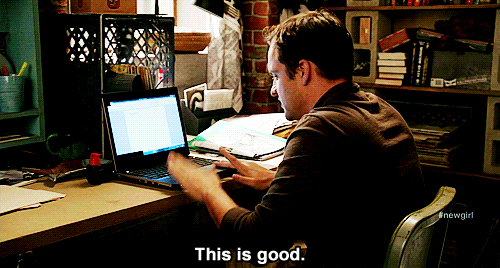5 Ways to Show (Not Tell) In Your Personal Statement
/At this point in your academic career, you’ve heard of the creative writing mantra — show, don’t tell. This writing advice also shows up everywhere to create a winning admissions essay.
But what does that actually mean and how do you do that?
I broke down the “show, don’t tell” technique in four easy-to-follow suggestions from admissions essays that worked.
1. Don’t Forget About The Five Senses
There’s a reason schools start teaching us about this early. You want the admissions officers to live out your story by engaging them in every nitty gritty detail.
A good story incorporates the senses: touch, taste, feel, smell, and hear. These details bring anecdotes to life, and also make for super compelling openers. Don’t stress trying to cram them all in, but look for natural ways to add these descriptive details to bring your story to life.
Show: “That night, the rain pounded on the old windows, like an angry crowd getting more and more agitated. At 1 a.m., a fierce air pressure in the room created a sharp pain in my ears, awakening us, only a mere second before the windows imploded.”- Irina, Hamilton Class of 2018
Tell: The hurricane hit that night and it was terrifying.
Why this works: We could feel the pain in her ears, we could feel the pressure in the room, and we could hear the rain pounding on the windows.
She didn’t cram in taste and smell here. Sometimes all five aren’t relevant and the last thing you want to do is sound forced. However, start with journaling the five senses involved in your opening anecdote and revise from there. You’ll see what to cut in the revision process (and if you’re not sure, ask a trusted friend or teacher if anything feels overdone or forced).
Show: “The sound was loud and discordant, like a hurricane, high notes and low notes mixing together in an audible mess. It was as if a thousand booming foghorns were in a shouting match with sirens. Unlike me, this was a little abrasive and loud. I liked it. It was completely unexpected and extremely fun to play.”- Curtis, Johns Hopkins Class of 2022
Tell: I liked how loud the piano was. It made it fun to play.
Why this works: The writer here employs the more advanced form of simile and metaphor to help us understand the sound a piano makes even if you’ve never heard it before, giving a fresh perspective on what could be a common topic.
2. Use the “Rule of Three”
The “Rule of Three” is a psychology hack to make your writing memorable. Three is the minimum number of examples the brain needs to recognize a pattern.
Each example should build on the one before it, with the last example serving as the most powerful.
Show: "I masked the pungent aromas of the Filipino delicacies my immigrant parents made with pasta and hamburgers when my friends came over, I laughed off incidents when parents or teachers would mistake me for the only other Filipino girl in my grade, and I recognized that learning solely about European and East Asian history in world history classes was the norm."- Isabella, Johns Hopkins Class of 2024
Tell: “I experienced racism growing up.”
Why this works: Each example builds the momentum of how the writer came to terms with her unique heritage and the racist microaggressions she encountered. The parallel construction of starting each sentence the same way shows a lyrical, almost poetic approach.
Show: “When I first saw the periodic table, I was in awe; the colors, the patterns, the symmetric shape—everything mesmerized me.”- Akash, Johns Hopkins Class of 2023
Tell: I love everything about the periodic table.
Why this works: Even though it’s short, this example still packs a punch by listing all the things the author loves about the periodic table. The power of three uses rhythm in a nice way to break up the monotony of the sentence.
3. Quantify Everything
Using numbers when detailing a situation gives you and your story more credibility.
Saying you were engrossed in an art project from 8am to midnight, rather than working on it “all day,” adds an extra layer to your dedication. If you want to write about how you started a club, try to include a timeline. Over how many days did you come up with the perfect mission statement? How often did you meet? It’s those little details that seem insignificant but work well to show dedication, work ethic, and commitment.
Show: “I devoted myself to fly fishing. I asked questions. I woke up at 4 a.m. to fish before school. I spent days not catching anything. Yet, I persisted.” - Dylan, Hamilton Class of 2022
Tell: I like fly fishing so much that I would wake up early just to go.
Why this works: The quantifier really stresses the magnitude of this feat. 4 am?! That is some serious dedication.
And on a nerdy-writing note (because I am filled with those and you’re welcome for that), putting down the time helps situate the setting and makes us visualize your story.
Show: “Ten hours of rolling crusts and peeling apples and kneading butter and sugar into the crumble topping, all the while drowning in the cinnamon air, surrounded by near-literal mountains of pies that we were forbidden to touch.”- Heking or “Amy,” Hamilton Class of 2018
Tell: I was baking pies all day when I got the rejection letter.
“Ten hours” is so much more evocative than “all day.” We know she’s not overexaggerating or simplifying because she’s giving us that numerical detail.
Show: “On one hot night in a dark room at the heart of Boston, I became friends with 19,580 people in one single moment. We had all journeyed to the TD Garden from wherever we were in our lives to see Tom Petty perform. I knew his music because my mother had shared it with me. It meant something to her and it meant something to me. His music meant something different to every person in that room and all those meanings, all infinite number of them, wrapped around the music notes and existed in harmony on that July night. I had to close my eyes. It was as if I could hear the heartbeats of every person in that room, pulsing along with the rhythm of the music. By sharing his music, Tom Petty gave me a striking awareness of 19,580 people that live and feel alongside each other. Tom Petty will live as long as people feel.” Kaycee, Tufts Class of 2023
Tell: I had a great time at a Tom Petty concert.
Why this works: This is a unique way of incorporating numbers that doesn’t just speak to time spent or timeline-building. We know that it must have been a packed room because she tells us there were nearly 20,000 people there. Focusing on that quantifier and repeating it sets up how meaningful this night was to her.
Skim through your essay and think about what supporting details you can add into your story. How long do you spend on your photography club each week? How old were you when you immigrated to this country? How many years have you played the violin? In front of how many people did you present your science project? Worry about word count later. Word count is the easiest thing to fix; these details aren’t.
4. Pretend You’re a Screenwriter
Stuck staring at a blank computer screen? When all else fails, think about how you’d like your story to be represented as if it was a movie of your life. How would it look? What scenes would make or break the action? Consider using dialogue. Show me what they say, rather than telling me.
Show: “The heavy front door opened, then shut. He was later today than usual. As I sat there, finishing up my second grade math homework, he greeted me with his trademark whimsical, yet tired, smile. His appearance: a faded, worn-out shirt and durable, dusty jeans; his hands, caked with the grime and dirt that come with his line of work; his hair, on the verge of being assaulted with grey, covered in dust. After washing his hands, his greatest tools for his trade, he sat down with his reheated dinner, prepared by his loving wife forty minutes earlier. Without a word, he began to eat, aching for food after a long day of work. […] We both sat there in silence. I could not help but look at my father the car mechanic in awe, considering where I myself might end up when I am his age.” Michael, Tufts Class of 2021
Tell: My dad came in to help me with my math homework looking like he always did.
Why this works: This feels like the camera is zooming out sentence by sentence. We can see the messy clothes and organized room, and most importantly, we can imagine what it was like to be 2nd grade Michael seeing it.
Show: “‘These people are just confused,’ Emily whispered to me as she stared out the car window at the gay couples walking down the rainbow streets of the Castro. I was utterly offended by her statement, but I replied calmly, ‘Let people be who they are.’”- Callie, Johns Hopkins Class of 2023
Tell: She said something homophobic to me, and I tried to keep my cool.
Why this works: Dialogue is another great way to help the reader picture what happened. A good trick to remember: if the conversation was so memorable that writing it in your own words doesn’t do it justice, use quotes. Dialogue also helps speed up the story momentum and keep the reader engaged.
Show: “My math teacher turns around to write an equation on the board and a sun pokes out from the collar of her shirt. A Starbucks barista hands me my drink with a hand adorned by a small music note. Where I work, a customer hands me her credit card wearing a permanent flower bracelet. Every day, I am on a scavenger hunt to find women with this kind of permanent art. I'm intrigued by the quotes, dates, symbols, and abstract shapes I see on people that I interact with daily.”- Jillian, Class of 2021
Tell: I love to keep an eye out for people’s potentially hidden tattoos.
Why this works: Each of these sentences feels like a new visual scene. The examples are vivid and bring her story to life clearly.
5. Try experimenting with metaphor
Comprehensively explaining your emotions can be difficult. Metaphors offer insight into your story through a universal perspective, allowing the reader to better understand your message. That said, it’s way too easy to delve into cliche when using metaphors, so this trick is the hardest to pull off. You have to really dig deep and try to be original in your writing. Metaphors can be a difficult tool to implement, but once you understand how to use them effectively, these tools can completely transform your essay.
Show: “When I failed math in my sophomore year of high school, a bitter dispute engulfed my household -- “Nicolas Yan vs. Mathematics.” I was the plaintiff, appearing pro se, while my father represented the defendant (inanimate as it was). My brother and sister constituted a rather understaffed jury, and my mother presided over the case as judge.” - Nicolas, Harvard Class of 2021
Tell: Failing math in 10th grade was stressful for me and my family.
Why this works: Nicolas’ whole essay is an extended metaphor, explaining the tension in his family through a parallel with a judicial court. This creative approach to storytelling allowed Nicolas to express his struggle while weaving a plot line through the essay, keeping it entertaining and interesting.
Show: “The women are like the olive trees, which reside in soil so dry that it crunches under your feet as you walk. Somehow, they manage to grow anyway; persistence and stubborn endurance are all they know. The trees can grow through rock, live without rain. They stagger, twisting and turning toward the heights despite the farmer’s careless pruning; the mere matter of amputated limbs will not stop them.” - Sage, Hamilton Class of 2022
Tell: The women were persistent and strong.
Why this works: Descriptive imagery is one of the best tools you have at your disposal. This anthropomorphic extended metaphor is powerful because it pushes past the material world and makes the woman come alive in unexpected visual ways. This unique approach showcases the writer’s skills in thinking and wordplay, two important strategies in your writing.
Show: “I’d like to think that The Great Gatsby’s pursuit of Daisy is not unlike my own pursuit of bacon. I’ve gobbled up new knowledge rapidly, hankering after it like any elusive bacon strip, and happily digesting any new bits of information.” -Miriam Nassiri, Duke Class of 2022
Tell: I love learning and bacon a lot.
Why this works: Bacon is a silly topic that is engaging and shows how voracious of a learner Miriam is. She uses a humorous metaphor to explain her love for learning, allowing her to express herself through something we all know and love: food. This metaphor is a perfect example of using everyday commodities to describe an experience with skill and parody.
Editor’s Note: This post was originally published on April 2021 and has been updated with new relevant information.
Want to work with me on adding these “show, don’t tell” elements to your admissions essay draft? See my affordable college essay classes below! Space is limited to ensure personalized help.
Unsure of your personal essay topic or where to even begin? We’ll discuss strategies for choosing your Common App prompt, ideas to get you started, and journaling questions to help you find your story. Plus, students will be able to submit essay ideas anonymously for a rapid live edit on-screen to find your topic and determine the best storytelling approach. The 1-hour live workshop class includes:
60-minute interactive class discussing student-submitted essay topics
Live edit of essay topics on-screen followed by group discussion
5+ brainstorming ideas to help you find your story
Why certain topics work and others don’t — and how to know the difference
Limited to 10 students for personalized support
Every Common App essay needs multiple rounds of edits before it’s ready for submission. You’ll learn the techniques of self-editing including common mistakes to avoid and what to consider when cutting for word count. Plus, students will be able to submit their drafts for an anonymous live edit on-screen. The 1-hour live workshop class includes:
60-minute interactive class discussing student-submitted essay drafts
Live edit of Common App draft on-screen followed by group discussion
Individualized suggestions for improvement
Line-by-line edits and big-picture strategy ideas
Limited to 6 students for personalized support































